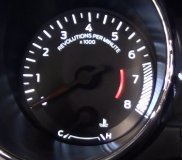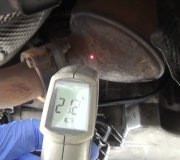Hi,
I suspect it is an inner joint. When you inspected them, did you take not if there was any play in the joints?
When checking a joint, try these things:
=First, park on a level surface. Find a flat, level surface to park your car and engage the parking brake for added safety.
-Visual inspection. Examine the CV joint boots, which are rubber or plastic covers that protect the joint from dirt and debris. Look for any signs of damage, such as cracks, tears, or leaking grease. Damaged boots can lead to dirt entering the joint, causing accelerated wear and potential failure.
-Grease inspection. Check the CV joint boots for grease. Grease leakage may indicate a damaged boot or a compromised joint. Inspect the area around the joint for signs of grease splatter or buildup.
The range of motion can also be checked. With the vehicle safely supported on jack stands or a lift, grasp the axle shaft near the CV joint and try to move it in different directions, both horizontally and vertically. The joint should have minimal play and should not make any clunking or clicking noises. Excessive movement or abnormal sounds could indicate a worn or damaged CV joint.
-CV joint play. Rotate the axle shaft while observing the CV joint. If there is noticeable play or a clicking sensation when rotating the joint, it may suggest a worn or damaged CV joint that needs attention.
Let me know if you have already done this. Also, if it is loud enough to record, do so and upload it for me to hear.
Take care,
Joe
Thursday, May 25th, 2023 AT 7:19 PM



